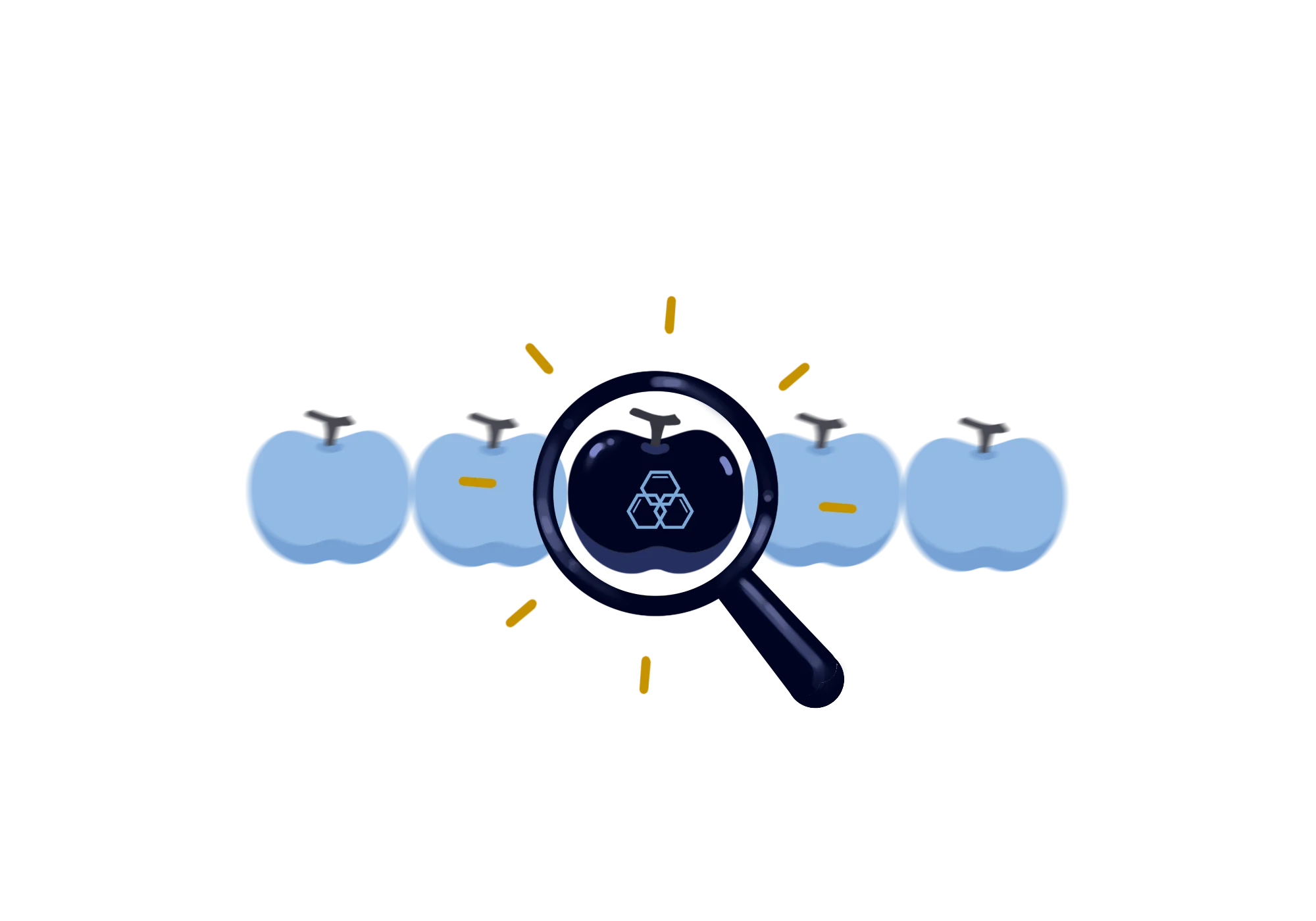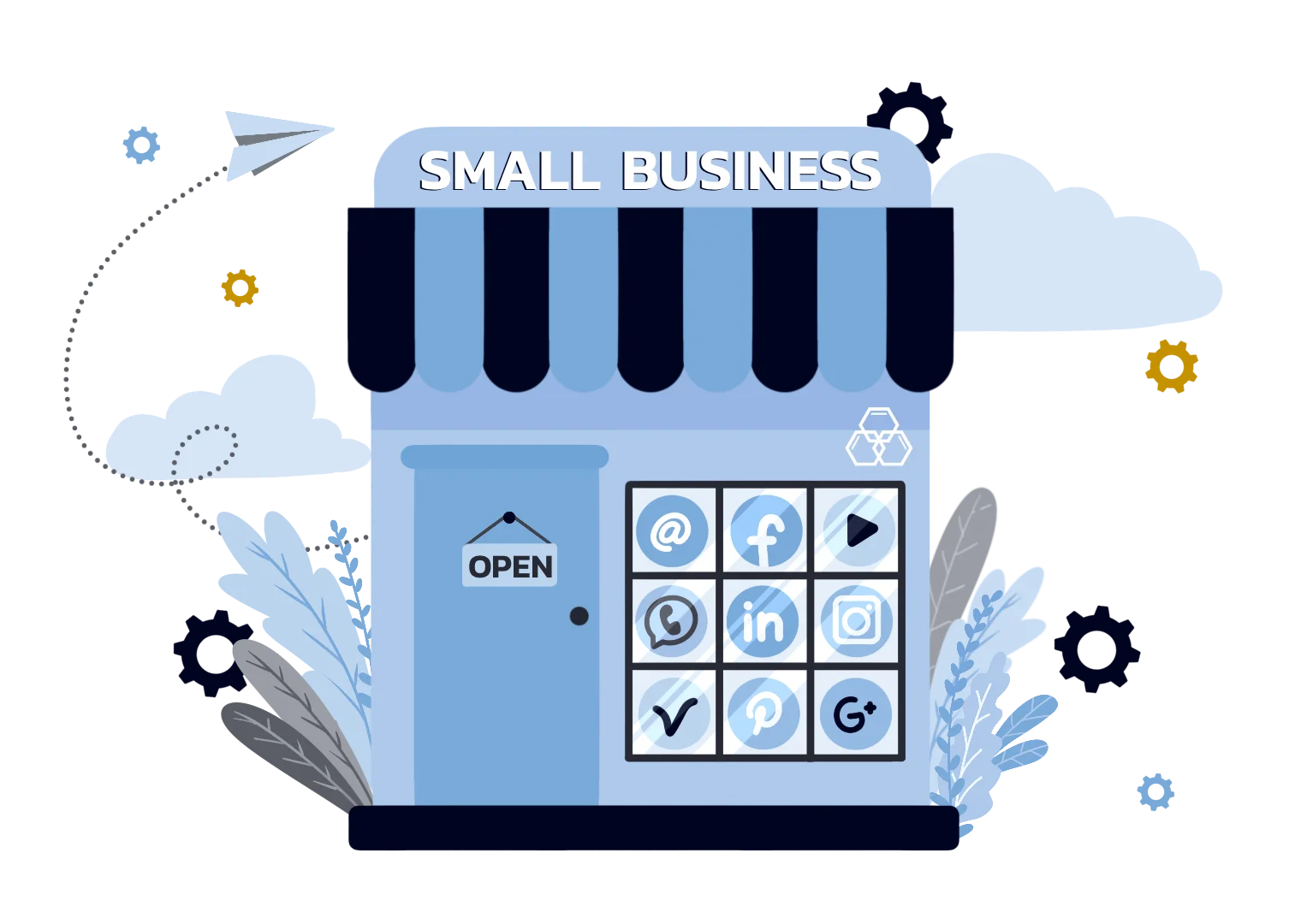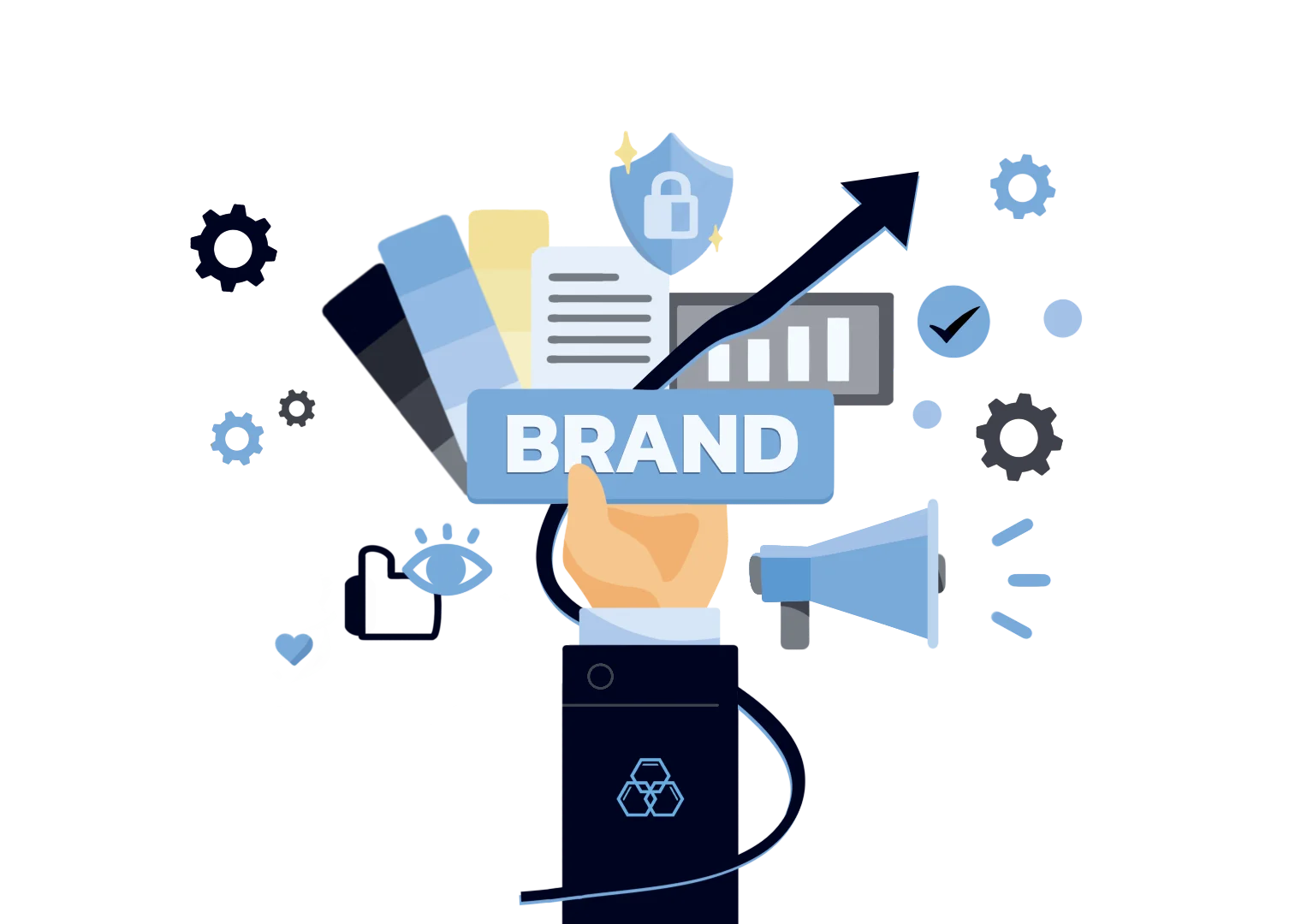Simply having a great product or service doesn't guarantee success. Companies must understand the competitive landscape they're operating within to thrive. This involves analyzing their rivals, identifying threats, and uncovering hidden opportunities.
The tricky part is that developing a strong competitive strategy isn't easy. It takes serious research, strategic thinking, and pivoting quickly when the market shifts.
What is a Competitive Strategy?
Also known as Michael Porter's generic competitive strategies, these are long-term strategy formulations designed to help a company gain a sustainable edge over its rivals. It can be classified as three generic strategies: cost leadership, differentiation, and focus.
Porter's competitive strategies go beyond simply reacting to the competition and focus on proactively shaping the market to your advantage.
Consider a competitive strategy as your company's blueprint for success within the larger business landscape. It involves answering key questions like:
- Who are your main competitors? Understanding their strengths, weaknesses, and tactics is essential.
- What makes your company unique? What are your core advantages that can be leveraged for differentiation?
- How can you create value for your customers that your competitors can't match? This could be through lower costs, superior products, unmatched customer service, etc.
What are the Benefits of a Strong Competitive Strategy?
Here's how a powerful competitive strategy directly impacts your bottom line:

Increased Profitability
When you successfully differentiate yourself from the competition, it directly impacts your bottom line.
Firstly, you can command premium pricing. People are willing to pay more if you offer something unique, solve customer problems more effectively, or provide a superior experience.
Secondly, your market share will naturally expand. You'll win over more customers when you offer something your competitors don't – innovative features, specialized solutions, or exclusive benefits.
Finally, focusing on your sustainable competitive advantage streamlines your operations. You'll optimize the areas where you excel, cut unnecessary costs, and ultimately boost your profit margins.
Let's use a coffee shop as an example. If you offer specialty drinks, a cozy atmosphere, or a great loyalty program, you can justify charging more than the generic coffee shop down the road. This uniqueness attracts more customers, and you'll likely save money by streamlining your operations and focusing on what you do best. The result? A healthier, more profitable business.

Improved Customer Retention
A clear competitive strategy focused on unique value acts like a magnet for attracting new customers. When you solve their problems better, create a more appealing experience, or resonate with what they care about, you become the obvious choice over generic alternatives. Customers actively seek out on thing that sets you apart.
But it's about more than just gaining new customers. It's about keeping them. In today's market, you can't take loyalty for granted. You create lasting relationships by constantly showing your customers what makes you different and demonstrating your commitment to them. They don't just buy your product or service; they become loyal advocates because they know your competitors can't offer what you do.

Gain Market Share
A winning competitive strategy allows you to go on the offensive. Instead of just holding your ground, you actively win over customers from your competitors through targeted differentiation and smart strategic moves. This steadily expands your customer base at their expense.
Understanding market trends and unmet needs allows you to seize new opportunities before your rivals even see them coming, giving you a significant advantage in capturing emerging swaths of the market.

Enhanced Decision-Making
Clear competitive strategies act like a compass, steering every decision you make. You constantly ask yourself, "Does this align with our advantage?" This focus helps you save money and energy on initiatives that won't help you win.
By knowing your strengths, you can confidently invest resources in the areas where you excel while minimizing spending on things you could be better at. This clarity reduces wasted effort – your team stops spinning its wheels and takes decisive, strategic action because everyone understands the roadmap to success.

Increased Resilience
A deep understanding of the competitive landscape gives you a 'heads-up' about coming changes. You can monitor market trends, shifting customer preferences, and what your competitors are up to. This allows you to proactively adapt instead of being blindsided by market shifts.
Knowing your competitive advantage also fuels innovation. You constantly seek ways to improve your offerings and stay ahead of the curve. This agility makes it easier to outmaneuver your competitors.
Finally, a strong competitive strategy gives you the resilience to navigate uncertainty and keep your market position. Market disruptions or economic downturns are less threatening when you fully understand your unique strengths and where you stand in the market.
Types of Competitive Strategy

1. Cost Leadership
Companies pursuing a cost leadership strategy focus relentlessly on maximizing efficiency and minimizing costs. This involves:
- Streamlined Operations: Every step from manufacturing to delivery is analyzed and optimized to eliminate waste and reduce downtime. For example, a furniture maker might rearrange workspaces to minimize the movement of materials.
- Large-Scale Production: Taking advantage of economies of scale by producing in bulk to negotiate lower input costs and maximize the use of expensive machinery.
- Strict Cost Control: Meticulous monitoring of all spending ensures that every expense is essential. For instance, a company might switch to a cheaper energy provider.
- Technology Adoption: Implementing automation or innovative processes that reduce labor costs or increase output within the same timeframe.
Cost leadership strategies are ideal for price-sensitive markets with standardized products. Beyond that, it works best for companies that:
- Can Achieve Significant Volume: Profit margins per item might be low, so high sales numbers are crucial. Think large retail chains.
- Have Access to Cheaper Resources: This could mean operating in regions with lower labor costs or having excellent relationships with suppliers for the best deals on raw materials.

2. Differentiation
A differentiation strategy is all about making your company stand out from the pack. This can be achieved through:
- Exceptional Product Features: Offering unmatched performance, functionality, or reliability. Think of a phone with incredible battery life or a remarkably durable outdoor product.
- Branding and Image: Building a strong brand identity synonymous with quality, luxury, or a unique personality. Apple is a prime example, as is a fashion label known for exclusivity.
- Customer Experience: Providing unparalleled customer service, support, and personalized attention. A company that goes the extra mile for each customer builds fierce customer loyalty.
- Innovation: Consistently leading the market with new technologies, designs, or solutions that others have yet to consider.
A differentiation focus strategy flourishes when:
- Customer Perception Matters: In markets where customers are willing to pay more for brands they identify with or products that deliver superior benefits.
- Diverse Customer Needs: Markets with varied pain points or specific desires offer room to differentiate yourself. For instance, a tech brand could differentiate by targeting a creative niche with specific software.
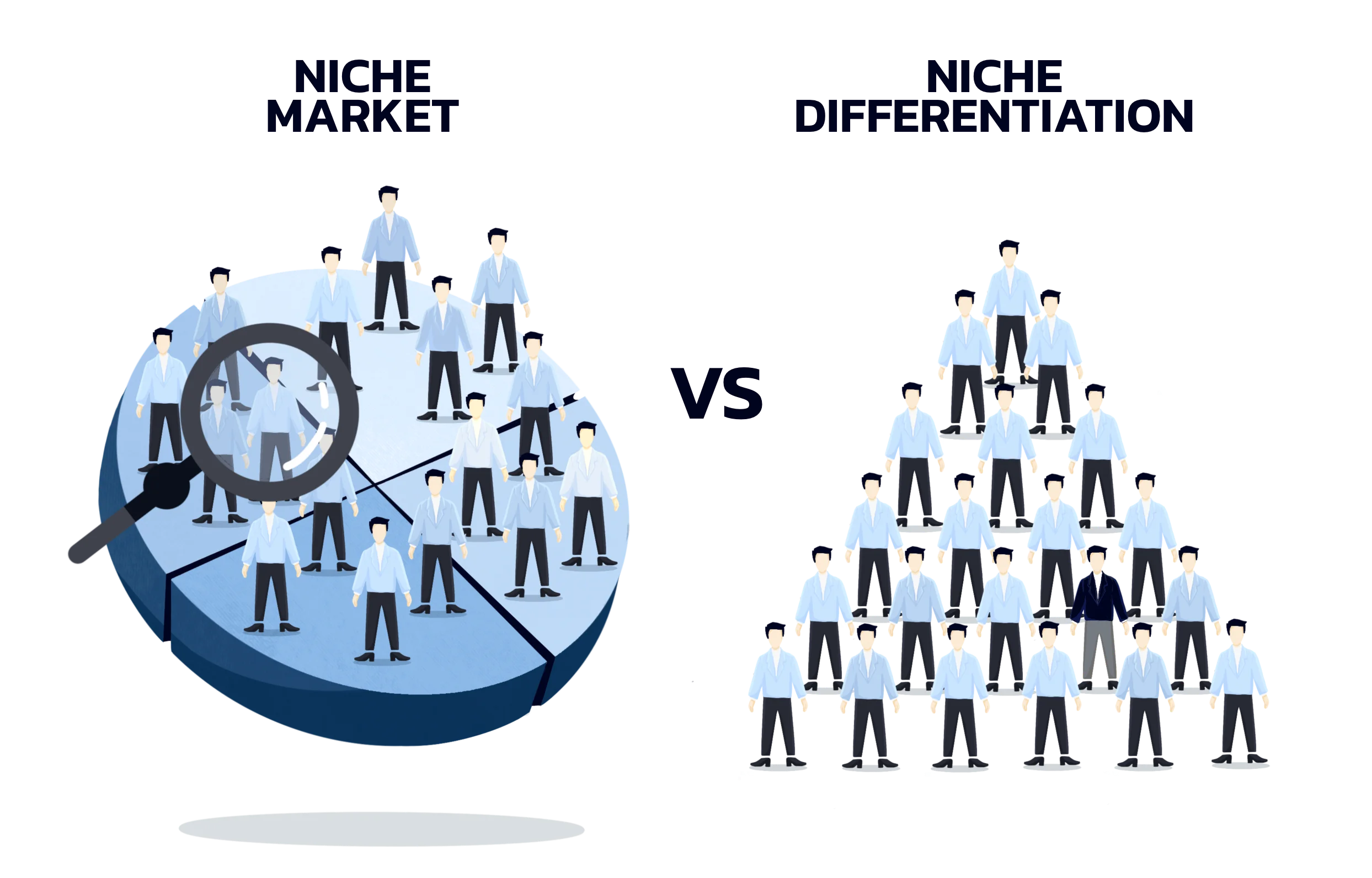
3. Cost Advantage
A cost-focused strategy combines ruthless cost-cutting with a narrow market focus. This involves:
- Hyper-targeted Operations: Processes are optimized for the chosen niche's needs rather than trying to be everything to everyone. For example, a clothing company could focus on a niche like plus-size basics, optimizing production for those items.
- Deep Niche Understanding: Gain expertise in your niche customers' buying habits, ideal price points, and preferred marketing channels.
This strategy is ideal when you can identify:
- Underserved Segments: Specific market segments with distinct price sensitivity and needs that current market players don't adequately meet.
- Unique Niche Distribution: Access to distribution channels specifically serving your niche at a lower cost than general channels. Think of an online marketplace specializing in vintage goods.
Advantages of cost focus include:
- Intimate Customer Knowledge: You understand your niche so well that you can precisely tailor your pricing and offerings, beating out generic competitors.
- Potential for Expansion: Dominating a niche can serve as a springboard for eventually expanding into broader markets while maintaining your cost-efficiency advantage.
4. Integrated Cost Leadership/Differentiation
An integrated cost leadership/differentiation strategy is a balancing act. You must be efficient without sacrificing the unique elements that set you apart. This involves:
- Operational Efficiency: Streamlining processes to keep costs down, but not to the point where it compromises the quality that makes you different.
- Targeted Differentiation: Carefully select key features or benefits that set you apart without significantly increasing costs.
This approach works best when:
- Customers Want Value: They care about price but are not solely focused on finding the cheapest option. They're willing to pay a little more for something special.
- Mass Market Appeal: You're operating in a large market where offering some differentiation is necessary to stand out.
The advantages of this strategy include:
- Flexibility: You're better equipped to handle market shifts since you're not locked into a pure cost-leadership model.
- Resilience: You're less vulnerable to competitors who undercut you on price alone because you offer value beyond being the cheapest.
How to Effectively Build a Competitive Strategy
Step 1: Deeply Analyze the Competitive Landscape
To understand the industry structure, start by identifying your direct competitors – those offering your customers the same or similar products.
But remember, indirect competitors, like a tea house competing with a coffee shop for customers seeking a warm drink. Also, be vigilant about potential entrants – companies with the resources to enter your market.
Next, conduct a thorough strategic analysis of your competitors. Examine the industry competition: their strengths and weaknesses in areas like product offerings, customer service, pricing, and marketing. Determine their market share and understand their marketing strategies, strategic position, messaging, and pricing models.
Finally, stay on top of market trends. Track emerging technologies that could disrupt your industry, monitor changing customer preferences, and be aware of any shifting regulations that could impact your ability to compete.
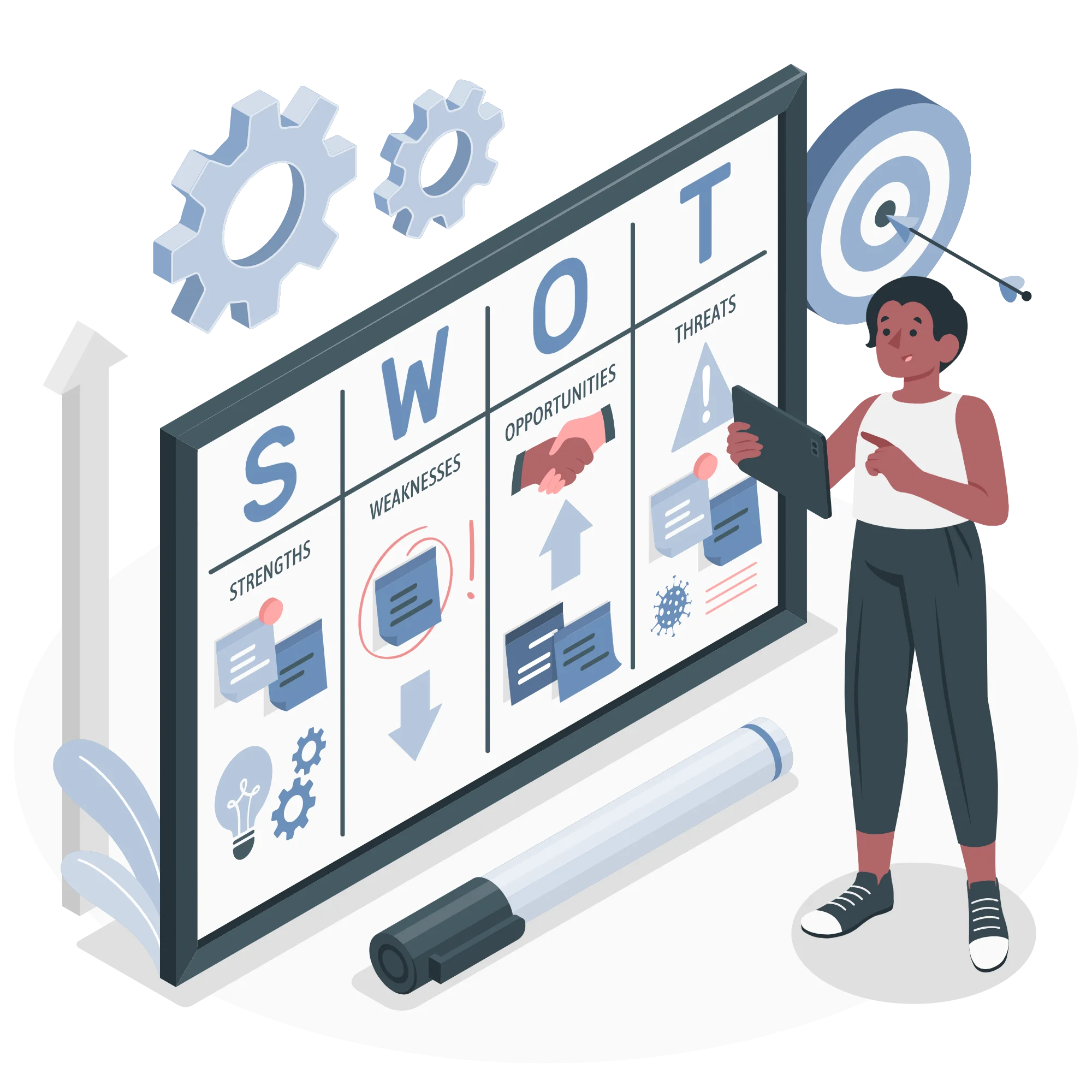
Step 2: Identify Your Company's Strengths (and Weaknesses)
To gauge your competitive edge, start with an internal audit. Assess your resources (financial, technological, personnel), your unique capabilities (like most cost-efficient producer or exceptional customer service), and your core processes (where do you excel in efficiency or quality?). Consider your brand perception – how should customers view you?
Crucially, define your value proposition; this helps define what particular market segment works for you. What unique benefit do you offer customers? What problem do you solve better than your existing competitors?
Lastly, conduct a SWOT analysis. Honestly identify your strengths (advantages that put you ahead), weaknesses (areas needing improvement), opportunities (favorable market trends to exploit), and threats (potential external dangers).
Step 3: Choose Your Competitive Strategy Type
After careful analysis, it's time for strategic reflection. Compare your internal strengths and weaknesses with the market landscape you've uncovered. Where do your unique advantages align best with potential opportunities?
Be realistic. Does your strength lend itself to dominating a niche or succeeding in a broader market? Choose a strategy balanced with your resources, whether financial or the talent you have on your team.
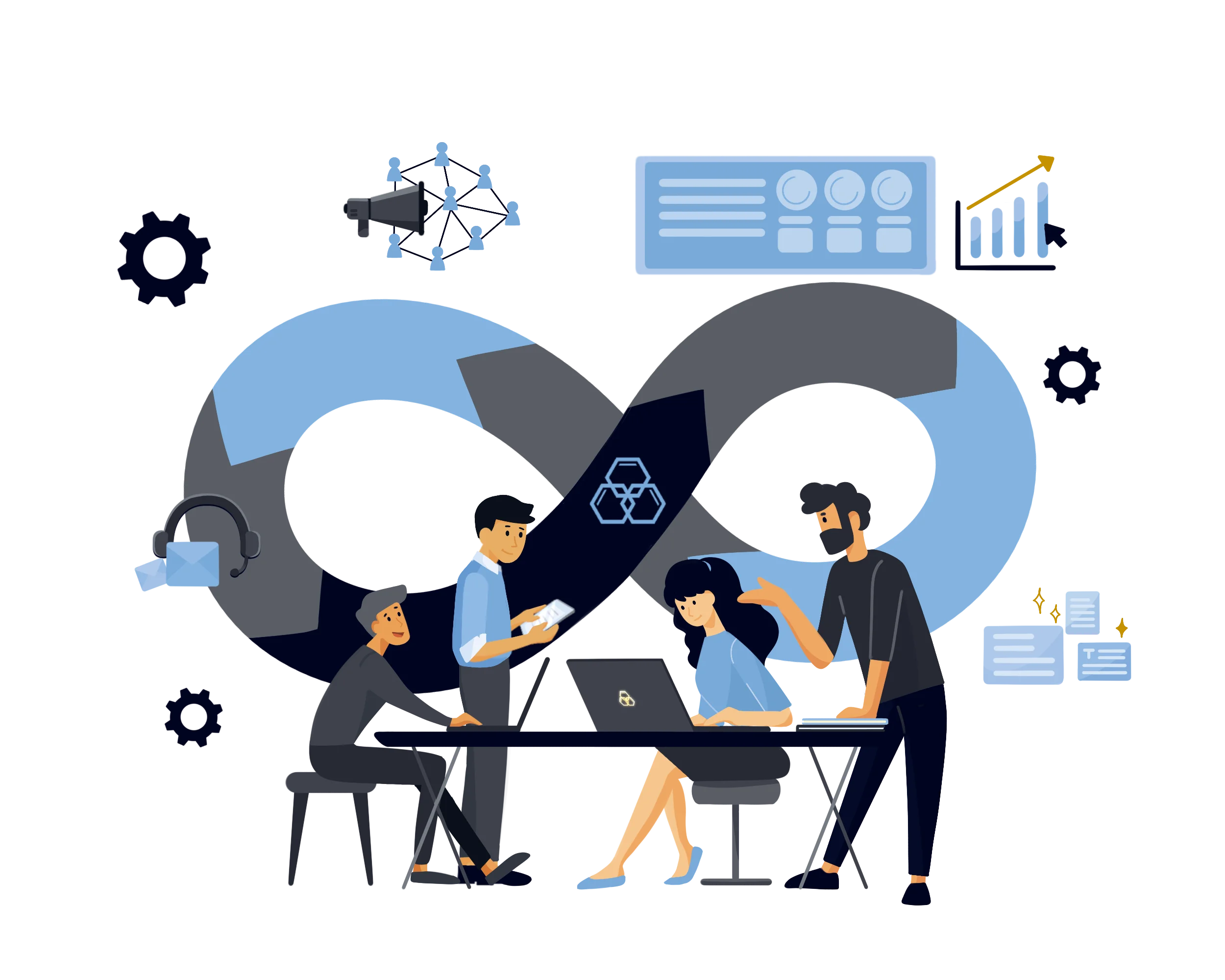
Step 4: Develop Your Action Plan
To make your competitive strategy a reality, start by defining measurable goals. Avoid vague targets like "be more successful." Instead, specify: "Increase market share by 5% within 12 months." Ensure your goals can be tracked with clear metrics and are achievable, even if they stretch you. Most importantly, they must directly support your chosen strategy.
Next, outline specific tactics—break your grand strategy into actionable steps that involve different departments, such as product development, marketing, and sales. Finally, allocate resources wisely. Determine the budget for each tactic and assign the right team members to ensure successful execution.

Step 5: Monitor, Measure, and Adjust
Staying on course with your competitive strategy means tracking key metrics that directly measure the success of your goals. These could include sales figures, website traffic, or customer retention rates. Set up regular tracking and reporting systems to stay informed.
Most importantly, be adaptable! Market conditions shift, and early data might show that some tactics aren't working. Based on your analysis, be prepared to adjust those tactics or even pivot your strategy.
FAQs
Who is the father of competitive strategy?
Michael Porter, a professor at Harvard Business School, is widely considered the father of modern competitive strategy. His seminal work, including the book "Competitive Strategy" (1980), established the foundational frameworks for analyzing industries and competitors.
What are the four competitive strategies?
Michael Porter defined four generic competitive strategies: Cost Leadership (being the lowest-cost producer), Differentiation (creating unique products or services), Cost Focus (achieving lower cost in a narrow market segment), and Differentiation Focus (offering unique attributes to a narrow market segment).
What is the main focus of a competitive strategy?
The main focus of a competitive strategy is to create a defensible and advantageous position within an industry. It is about choosing how to achieve a sustainable competitive advantage over rivals by providing unique value to customers.
What are examples of competitive strategies?
An example of Cost Leadership is Walmart, which competes on having the lowest prices. An example of Differentiation is Apple, which competes on unique design, ecosystem, and brand prestige. A Focus strategy example is Rolex, which targets the high-end luxury watch segment.
How Experts Help You Get a Competitive Advantage
Building a strong competitive strategy takes time, research, and specialized skills. While in-house teams are invaluable, partnering with external branding and marketing experts like Evolv can give you a significant edge. Here's why:
- Strategic Focus: Agencies are experts in crafting unique brand identities and targeted marketing campaigns. They bring a fresh perspective to uncover untapped customer niches that your busy in-house team might overlook.
- Cutting-Edge Expertise: Agencies live at the forefront of market trends, consumer behavior, and the newest tools. This ensures your strategies are always up-to-date and optimized for success. They could suggest innovative social media campaigns that would be off the radar of a generalist in-house marketer.
- Agility and Adaptability: Markets change fast. Agencies excel at pivoting their messaging or launching new campaigns based on real-time data. This agility helps you outmaneuver slower-moving competitors.
- Objectivity: In-house teams can sometimes get stuck in familiar patterns. Agencies provide an unbiased perspective, helping you identify potential blind spots and suggesting a stronger business strategy that takes your business to the next level.
But remember, this isn't about replacing your in-house team! Agencies must complement your in-house team's deep product and company knowledge, creating a powerful alliance that maximizes your competitive advantage.
Let us know how Evolv can empower your team!
You can also check out our blog and be updated on trends in branding and marketing.

